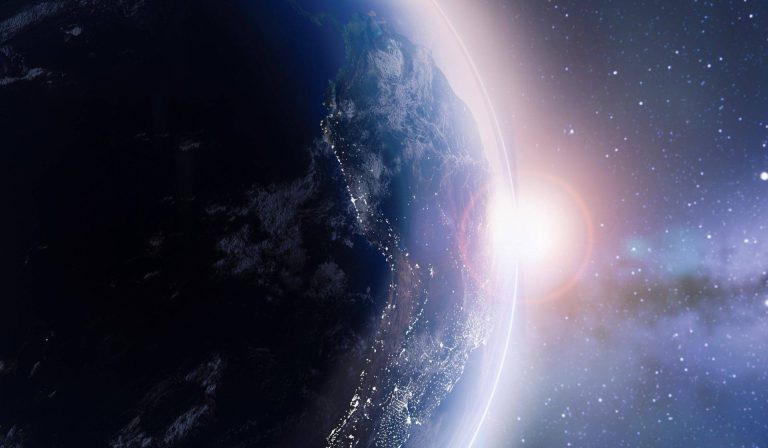Neutrinos: New source of renewable energy?
The latest scientific discoveries and technological advances have prompted humanity to focus its attention beyond the borders of our planet to begin to explore the possibilities or resources that have existed for eons in the universe, thus managing to significantly expand the limits of our capabilities as a civilization. In the following article, we will explore the potential as a renewable energy source, of an elementary cosmic particle of great abundance in the universe, neutrinos, and we will analyze the latest scientific advances that could turn the idea of their use into a reality of unlimited possibilities.
Background of the study of Neutrinos as a potential energy source
Since, in 2015, researchers Arthur B McDonald (Canada) and Takaaki Kajita (Japan) won the Nobel Prize in Physics, with their study based on the oscillations of neutrinos, demonstrating that they had mass, a necessary condition to generate energy, broad interest has been generated within the world of engineering to understand how to take advantage of this subatomic particle as an inexhaustible source of renewable energy.
Neutrinos are extremely abundant elementary particles in the Universe.. Like Quarks and unlike atoms, these are not made up of smaller particles. They have no electrical charge and have an extremely small mass. They are produced by various natural sources, such as the sun, the Earth's atmosphere, and high-energy cosmic events.
These particles have a unique property: they interact at a very subtle level with matter, which makes them the perfect candidate for the transmission of energy over long distances without significant charge losses.
The main idea of using neutrinos as an energy source is based on their ability to pass through matter without interacting with it and to the unlimited quantity of subatomic particles that arrive second by second to the earth in an uninterrupted manner.
It is estimated that more than 60 billion neutrinos pass through the Earth's crust every second. Concentrating an amount of energy much greater than what all existing fossil fuels on our planet could produce.
The most studied proposals consist of building large neutrino detectors with the aim of capturing a significant portion of these elusive and unstoppable cosmic travelers. Once captured, their energy could be harnessed by converting it into electrical current or heat.
Study plants or use of neutrinos?

Currently, there are different projects underway, focused on developing large-scale neutrino detectors.
IceCube Project, Antarctica
The IceCube project, led by scientists at the University of Wisconsin-Madison, is located at the South Pole and consists of a underground observatory that uses blocks of Antarctic ice to detect neutrinos. Instead of using traditional detectors on the surface, IceCube takes advantage of the unique properties of Antarctic ice to detect neutrinos passing through the Earth, using digital optical detectors, known as digital optics modules (DOMs), which are buried and submerged in the ice 2.4 kilometers below the surface.
When a neutrino interacts with a particle in ice, a blue light called Cherenkov radiation is generated. This light is detected by the DOMs and recorded for later analysis.
Although the main objective of IceCube is to study neutrinos and better understand the cosmos, it has also repeatedly considered the be able to use this technology for the generation of renewable energy.

DUNE Project, United States
The DUNE (Deep Underground Neutrino Experiment) project is an international collaboration in the field of particle physics and astrophysics that aims to study the properties of neutrinos. The experiment is carried out at Fermilab, located near Chicago, United States.
DUNE uses a complex system of detectors located underground to study neutrinos produced at the Fermilab Neutrino Accelerator. This study provides valuable information about the nature of these particles and can help answer fundamental questions about particle physics and the universe.

Study of Neutrinos in the Mediterranean:
ANTARES and KM3Net are two large international projects developed in European territory, specifically under the waters of the Mediterranean.
The first, a system of detectors immersed at a depth of 2.5 km in the Mediterranean Sea, near Marseille, whose construction was completed in 2008 with the aim of massive neutrino study.
The second, replacing the previous project, will consist of an underwater telescope currently under construction at a depth of 3.5 km. Project in which both universities and institutions in Spain are participating.
Although these projects are mainly focused on astrophysical and particle physics research, they could lay the foundation for future advances in the use of neutrinos as an energy source.
Capture and generation of neutrinovoltaic energy at home:
Advanced technologies need to be developed to convert neutrino energy into useful forms. One possibility is to use the interaction of neutrinos with specific materials to generate electric current through the photoelectric effect. Another option to study would be to use its energy to generate heat and then convert it into electricity through conventional thermodynamic cycles.
Recently a group of scientists, engineers and technicians from Germany and the United States, focused mainly on the study of neutrinos and their infinite energy potential, have been working collaboratively to create a device that generates electricity using neutrinovoltaic technology.
This neutrinovoltaic generator works using metal sheets coated with a multilayer nanomaterial composed of graphene and silicon, which, through vibrations of the graphene atoms produced by the surrounding radiation fields, allows the generation of electric current.

This technology could generate the following advantages:
- Fuel-free generator, so it does not require fossil fuels or other energy sources.
- Electricity production 24 hours a day, 365 days a year, regardless of weather conditions.
- Compact and lightweight size, making it easy to carry and install.
- It would be environmentally friendly, as it does not produce emissions or pollutants.
He Neutrino Power Cube, as it has been called, is a prototype that contemplates a relatively new technology and there are some challenges related to efficiency and costs that must be overcome before it can be deployed in series. However, the potential benefits of this technology are significant and could revolutionize the way we generate electricity today.
Future perspectives:
Despite its enormous potential, the use of neutrinos as a source of renewable energy still faces many scientific and technological unknowns to be studied and resolved. Efficient large-scale detection of neutrinos, cost-effective energy conversion, and long-distance transmission are just some of the obstacles that must be considered. However, as research and technology advances, it is possible that in the near future we will see neutrinos as an integral and frequent part of our energy production system.
After all, dreams on a universal scale are allowed to save our planet.
Sign up for our Professional Master in Efficient Energy Management Renewable!




































I am interested in energy generation, whether solar, wind or neutrinos. Thank you
Hello! Thank you very much for your interest and comment. On this page you can learn more about our professional master's degree in renewable energies with guaranteed employment: https://eiposgrados.com/programas/master-gestion-eficiente-de-las-energias-renovables/